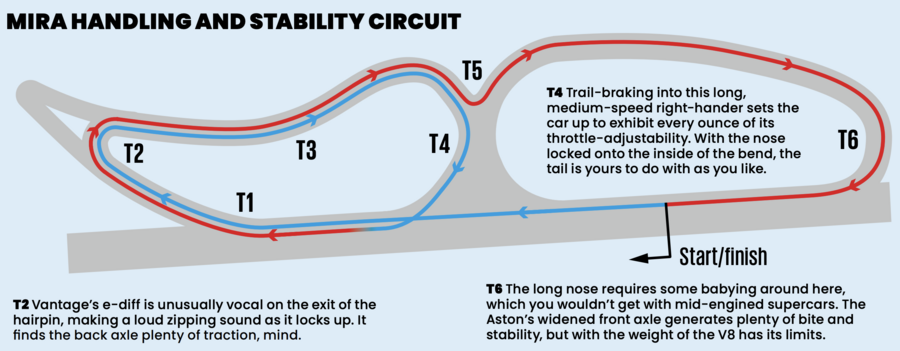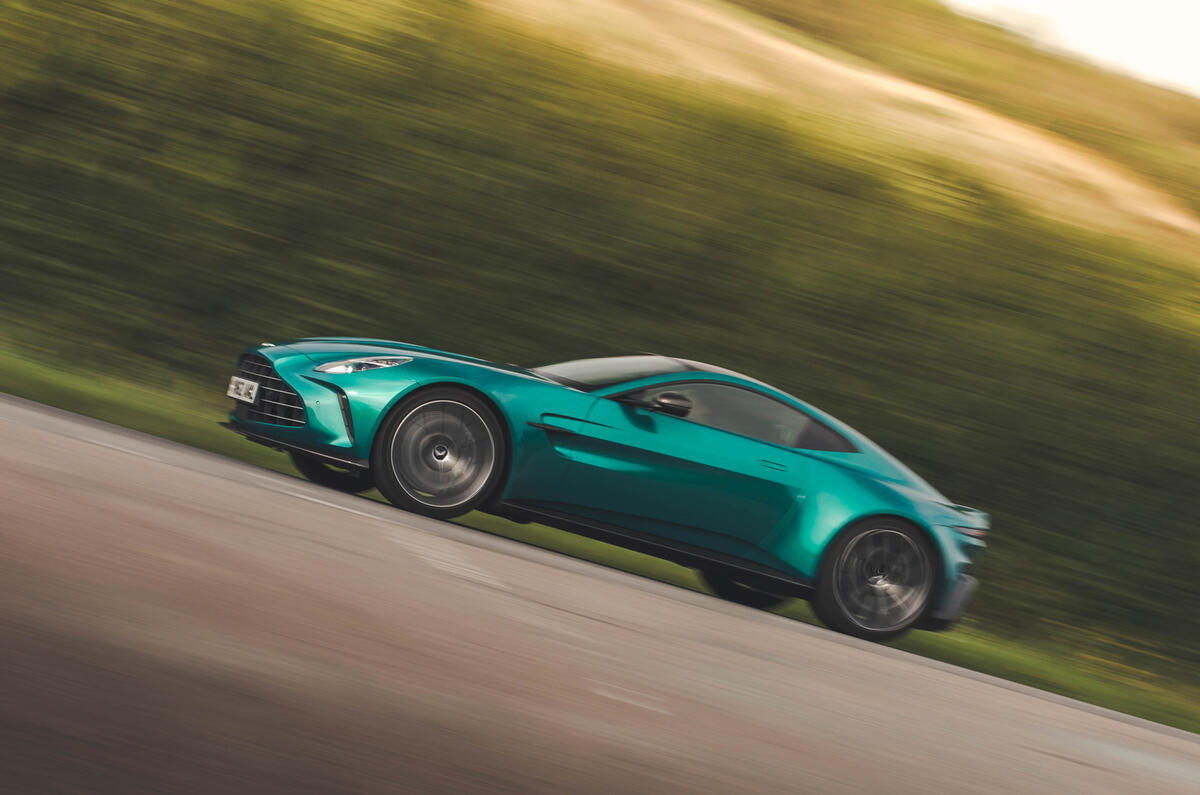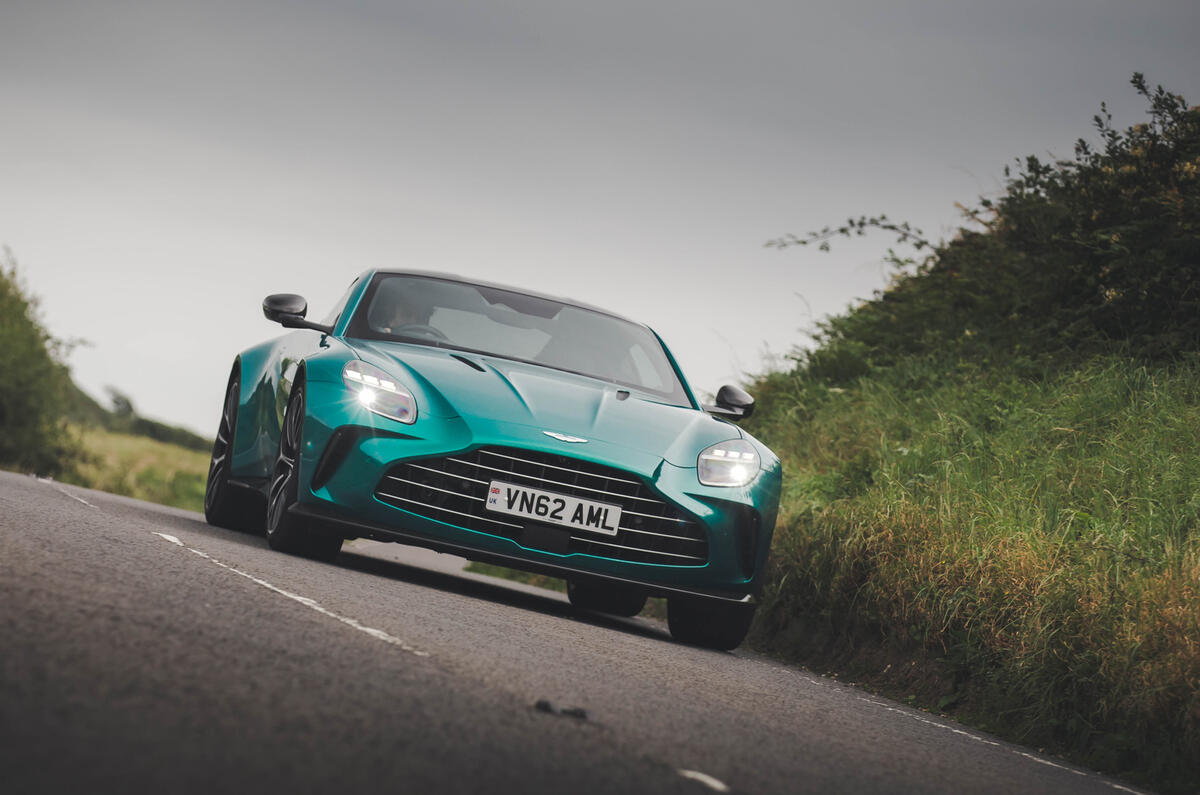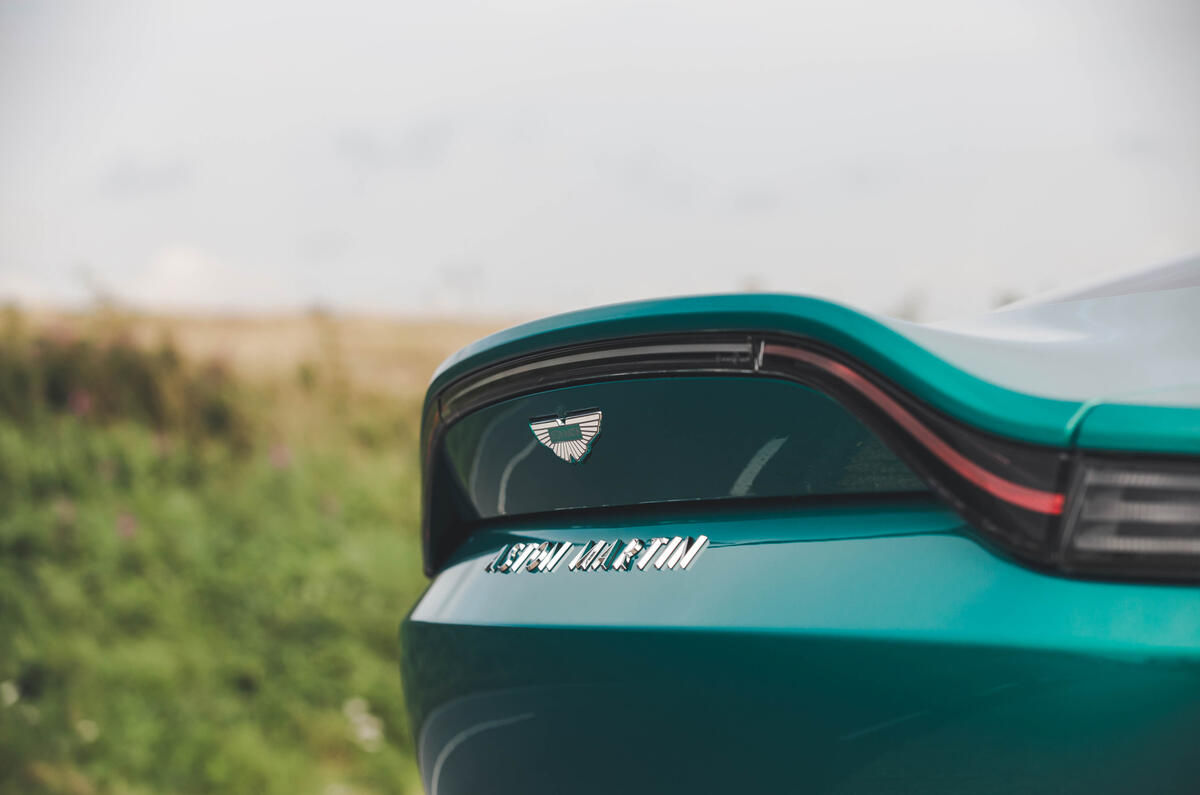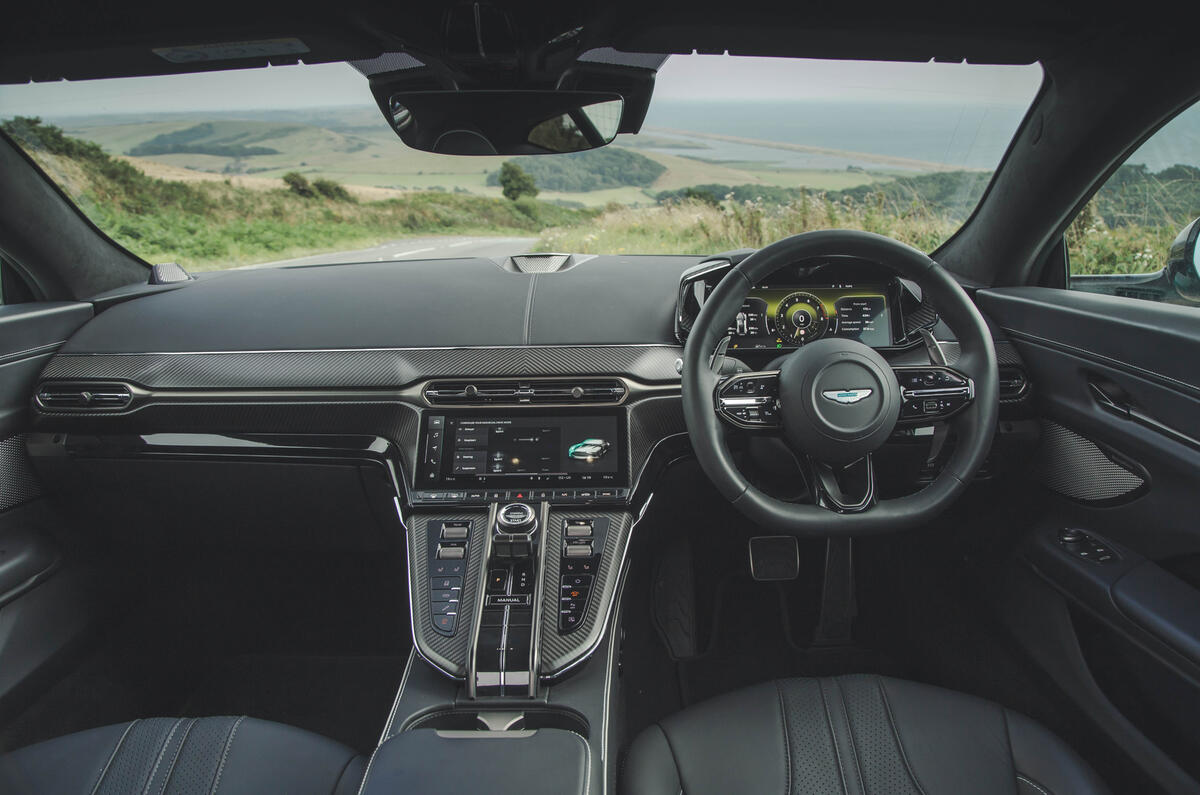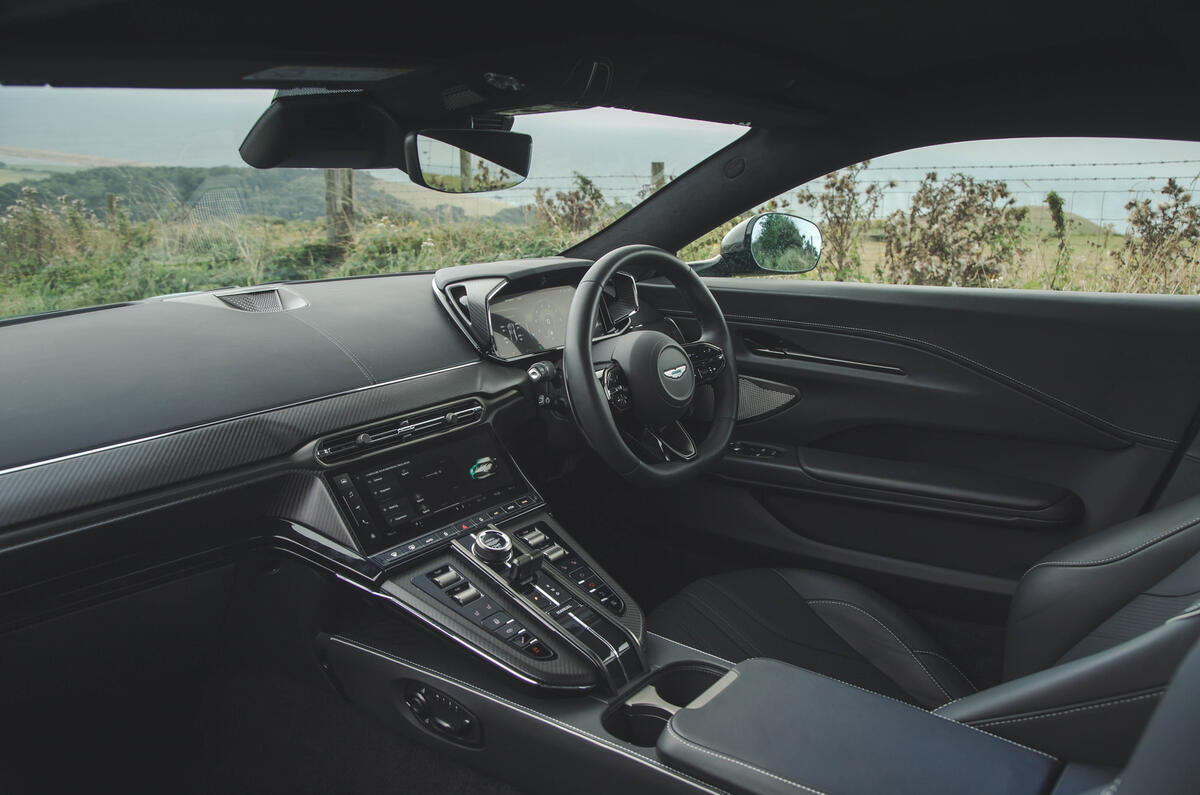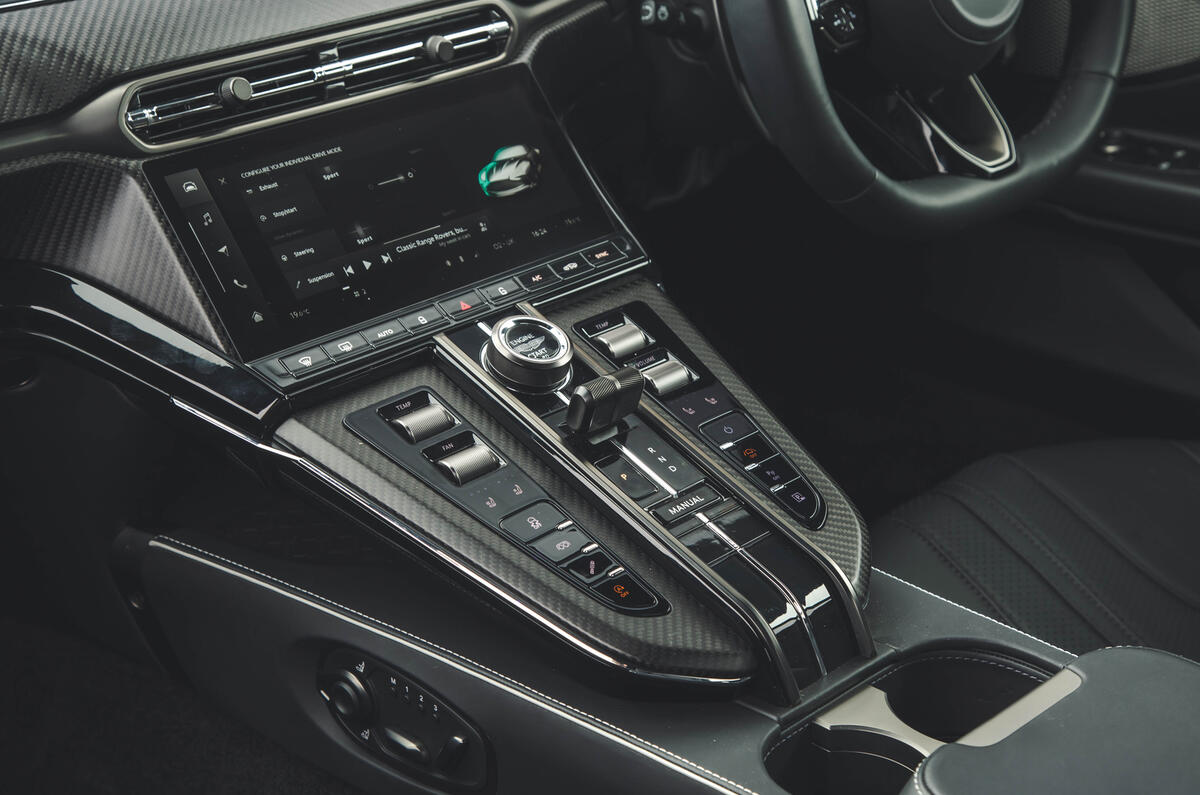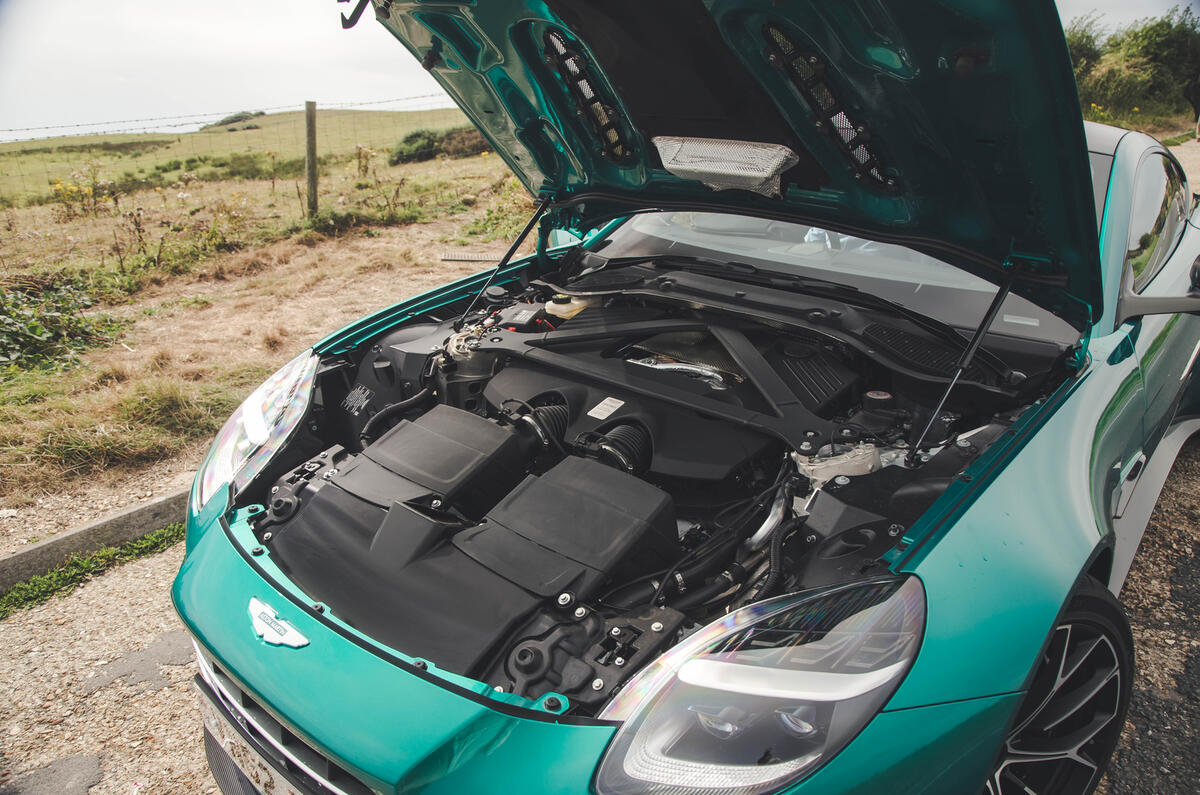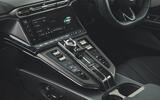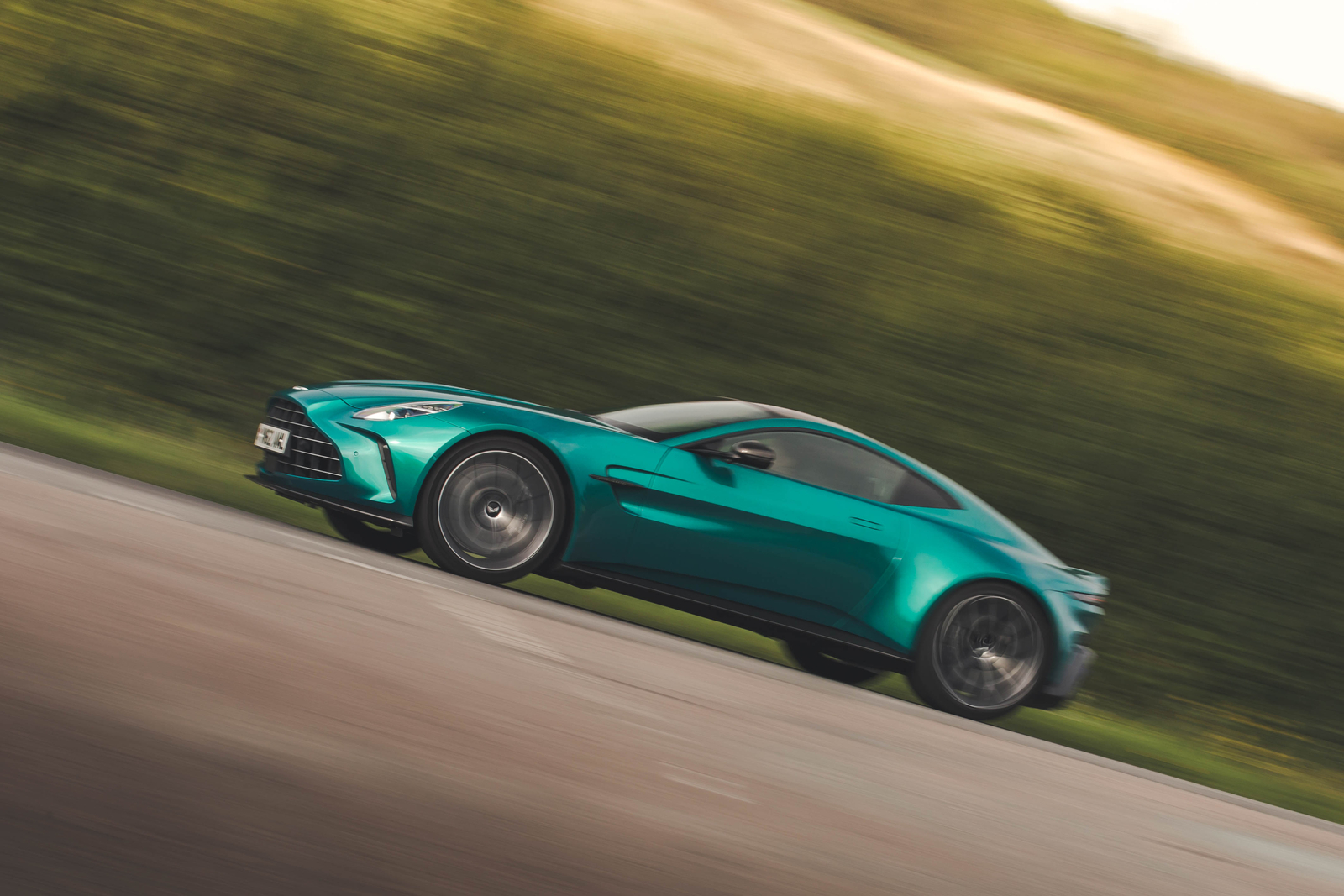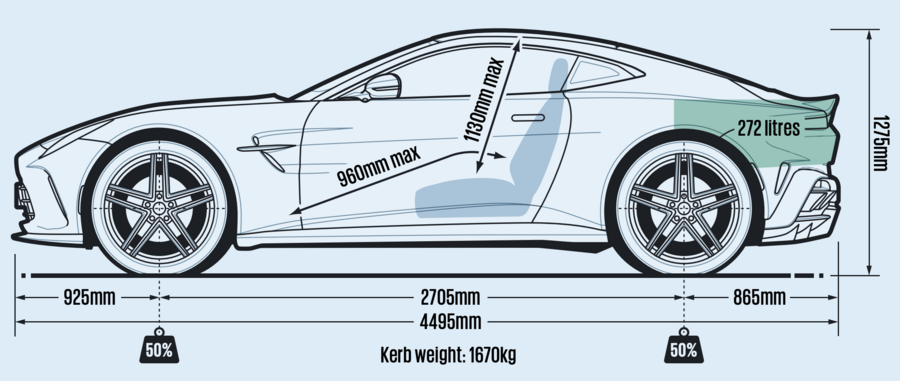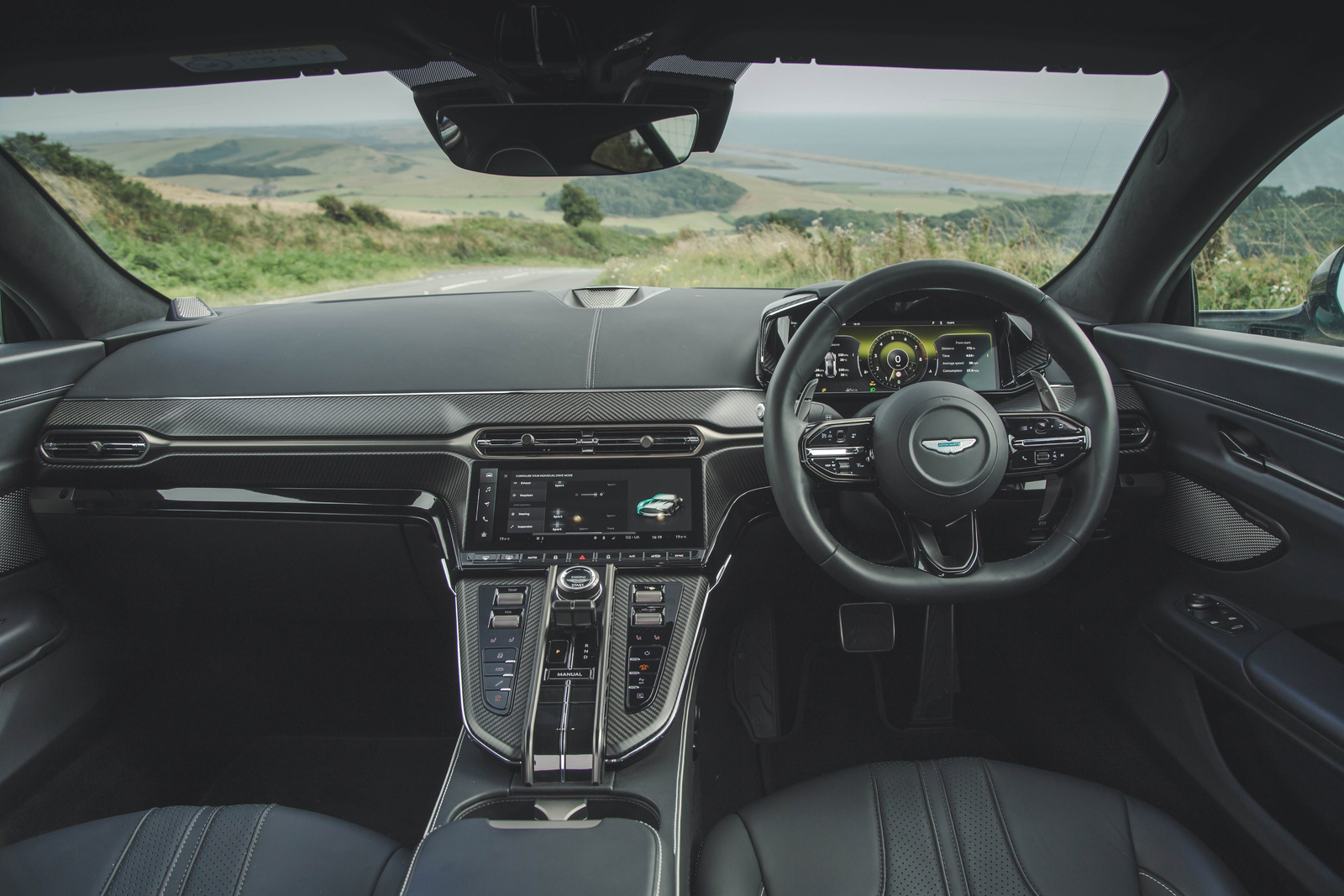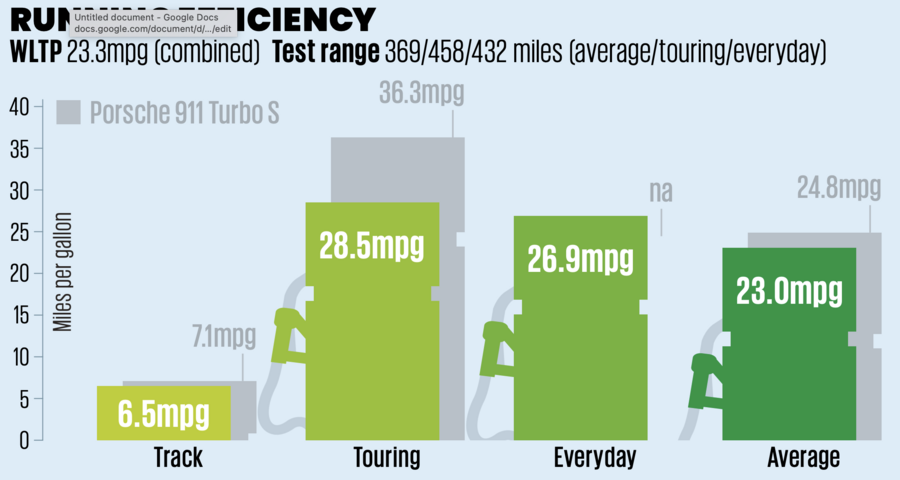You start to wonder how much of this is down to old-school engineering and how much it stems from the car’s new dynamics controller – 6D-IMU, they call it. The behaviour of the e-differential, torque vectoring, ABS and ESP is constantly informed by sensors on all the vital organs, as well as a six-axis accelerometer.
Whatever’s going on, the Vantage has an uncanny ability to get power down smoothly and, seemingly, organically. You can of course go full hooligan (see Track Notes, below), and the Vantage responds in kind, but as a road car it has a composure and speed potential unlike any previous Aston.
Criticisms? Hmm. A touch more granularity in the flow of feedback through the steering would be nice. Maybe lose that fleeting moment of nose-heavy inertia on turn-in, if that is even possible without essentially mounting the engine under the dashboard, Ferrari 812 Superfast-style.
Comfort & Isolation
We are delighted to report that the Vantage, though a touch more intense in its character than before, is effortless company for day-long drives. Anything less would have been a considerable blot in its copybook, because although Aston Martin has sought to level up its most junior product in terms of raw sporting intent, this is still a luxury front-engined GT car, so needs to have long-distance manners in its locker.
Fine driving ergonomics get things started – it’s possible for even taller drivers to achieve the traditional short-arm, long-leg arrangement, and the seats themselves are well sculpted. They are fairly deeply bolstered, but not unobtrusively so.
Visibility is good in the context of such cars but there remains a faint intimidation factor when you first slide aboard. The scuttle is high, the bonnet long, and the extremities of the car lurk in locations unknown. You adapt quickly enough, mind.
Ride quality is unexpectedly good. Aston claims these dampers are adept at separating out primary and secondary ride response, and that is our experience of them. There’s evidently a considerable spread between the softest parameter (Sport) and the most extreme (Track), but whatever you choose, never does the car feel floppy, or bone-jarringly firm, or inappropriate. It seems to work well almost all of the time. Impressive.
Noise is an interesting one. At 70mph we recorded 73dBA, which is the same as the old Vantage. That isn’t especially quiet, and a Porsche 911 Turbo S is considered very loud at 74dBA, but the nature of the noise isn’t wearing. We did 400 miles in a day in this test car and felt remarkably fresh at the other end.
Track Notes
As it stands, the Vantage exists as either, in essence, a pure road car or a Le Mans-going GT3 race car, without anything in between. That will, we suspect, change in time with the introduction of a derivative you could consider Aston’s answer to Porsche’s 911 GT3.
For now, know that this ‘regular’ model is still a hoot on track. With the ESP and traction control turned off entirely, it is perhaps the most throttle-adjustable car currently on sale – with a bit of weight transfer, there is seemingly no speed at which the Vantage can’t dramatically pitch itself sideways.
The impressive thing is that, relative to the alacrity with which the back axle can break away, the car is not particularly hard to catch and balance, which to us is the hallmark of something skilfully set up. You can use the new multi-stage traction control system, of course, and on a wet track day it would certainly come into its own, not only because there is an obvious difference between the settings and the level of intervention, but also because that intervention seems
to occur so naturally, allowing you to confidently drive through moments of yaw – little or large – while maintaining momentum. Out of smaller-radius bends, you can also hear the e-differential’s peculiar and pronounced zip- whine as it locks up and attempts to harness nearly 600lb ft of torque. We liked this.
Ultimately, though, the Vantage, in the form tested here, isn’t a track car and comes with caveats. The brakes are strong but lack some precision when it comes to modulating them. The slight understeer balance that is sensible for a road car prevents the Vantage from getting its nose into bends with true ease. It’s also a bit too heavy. Wild fun, though.
